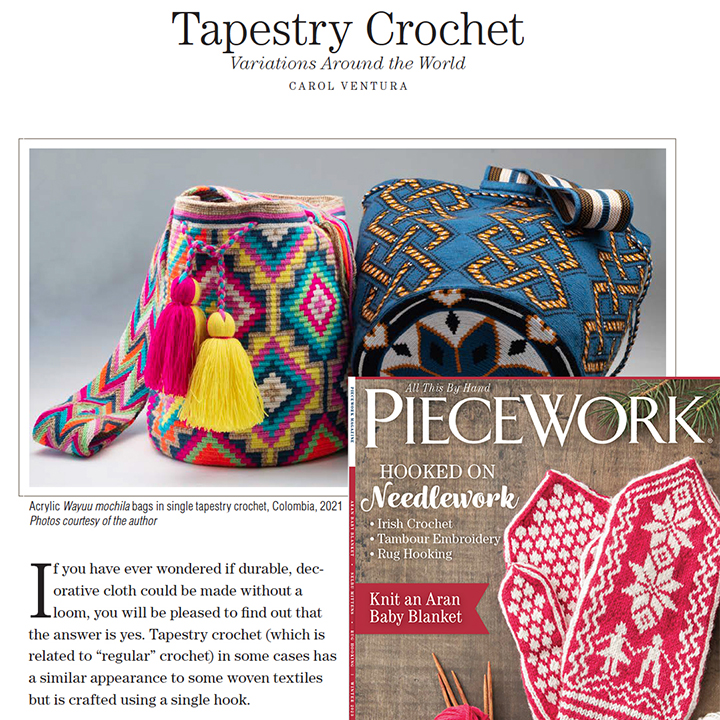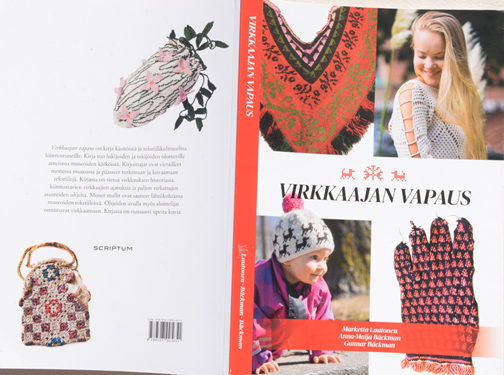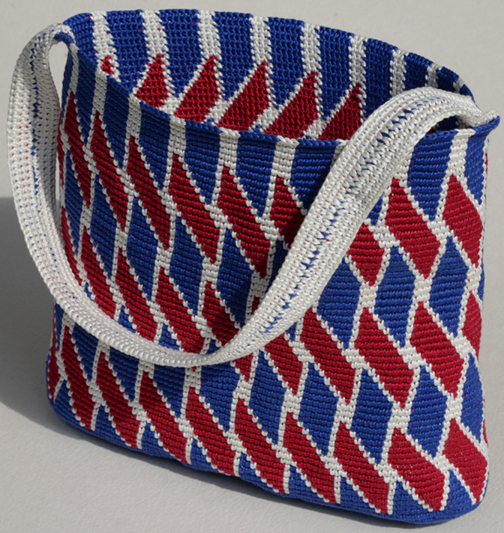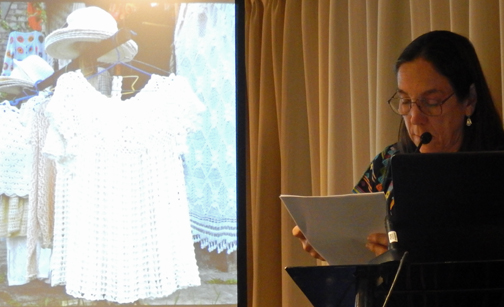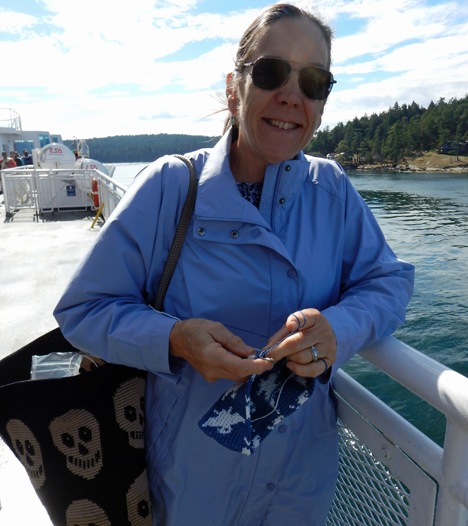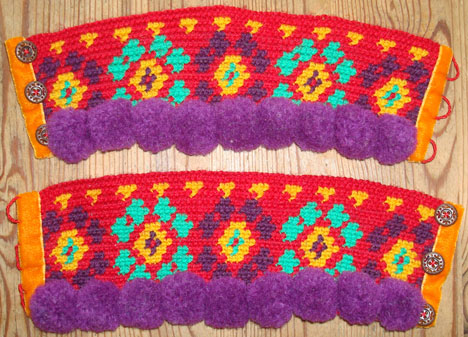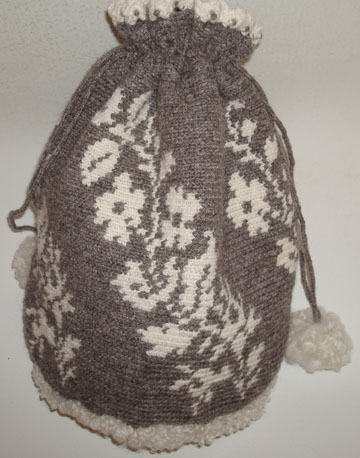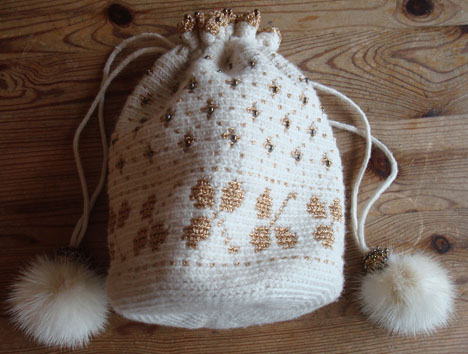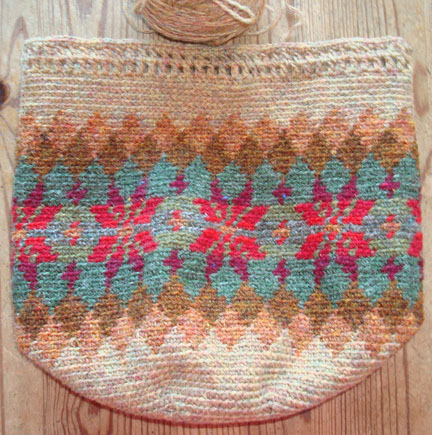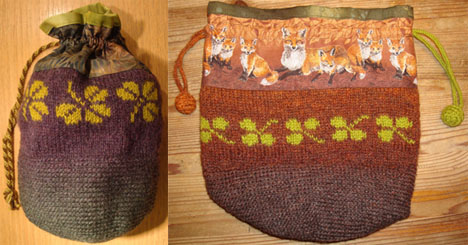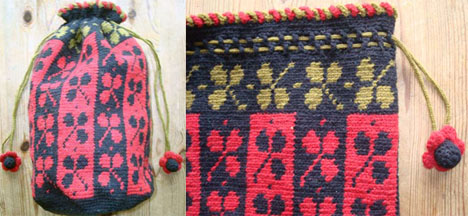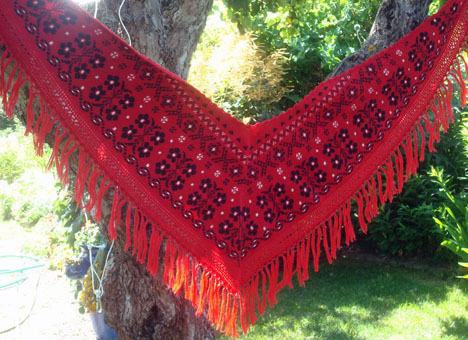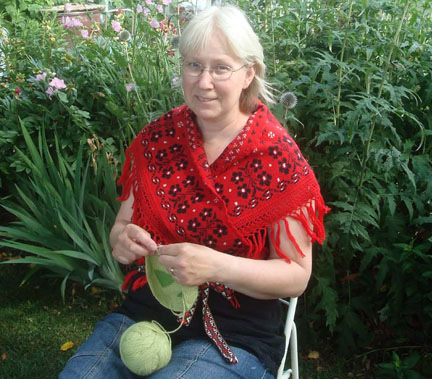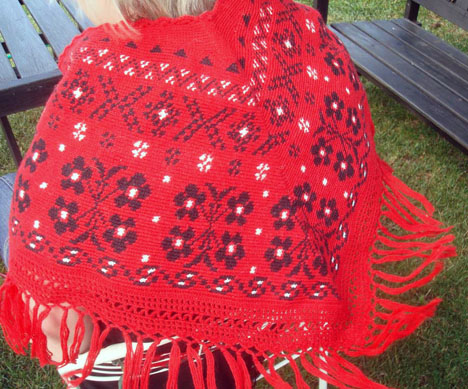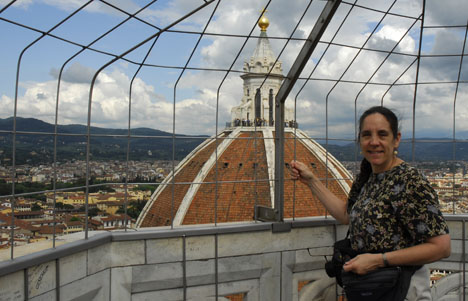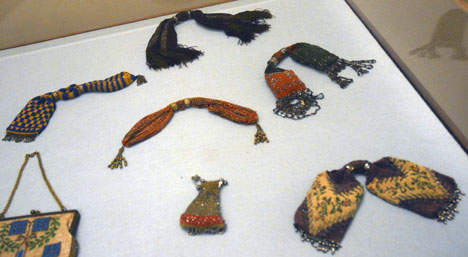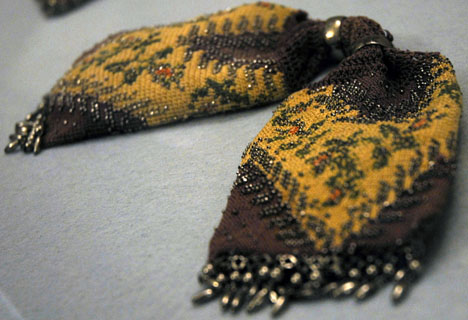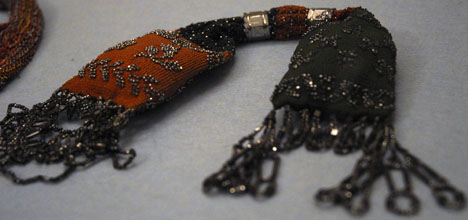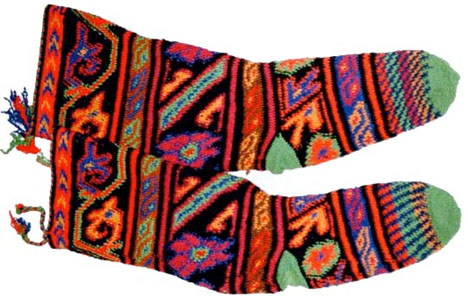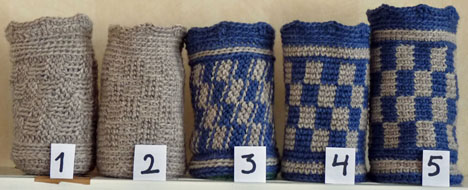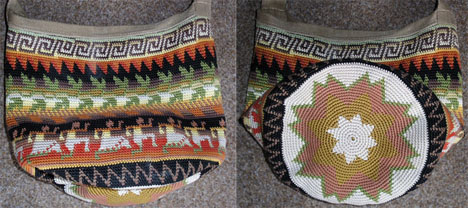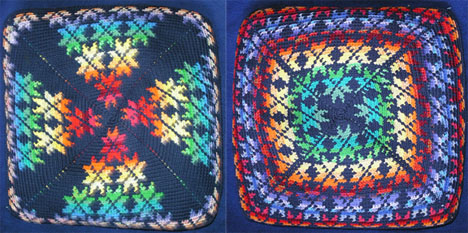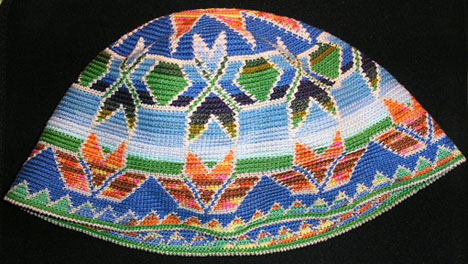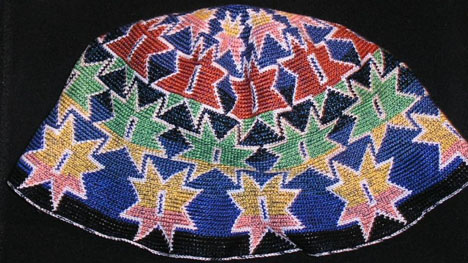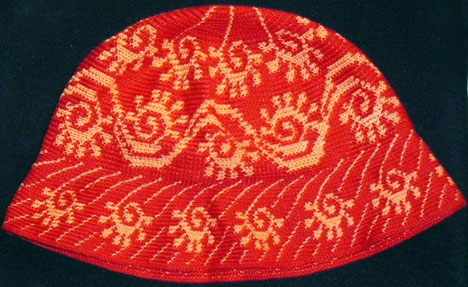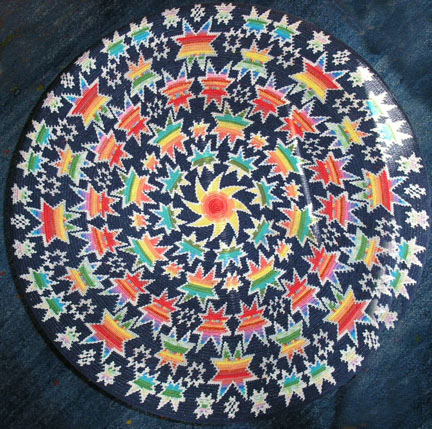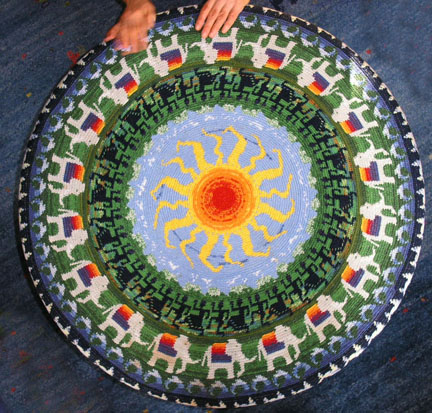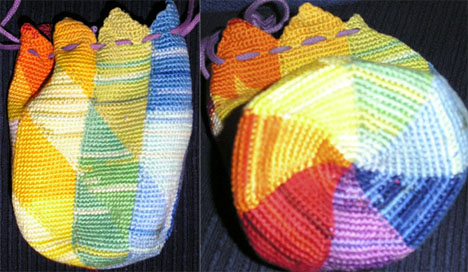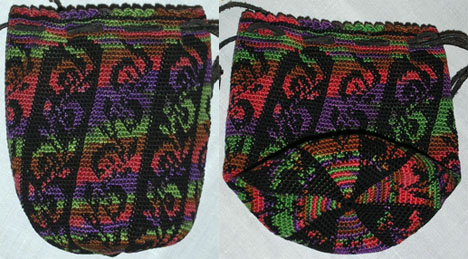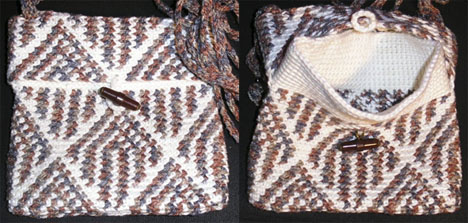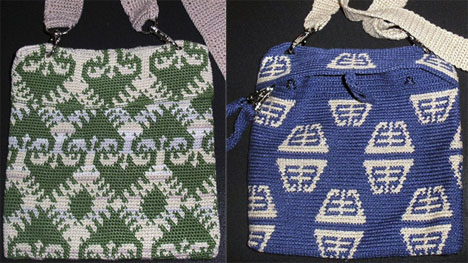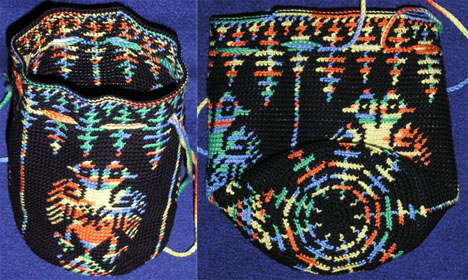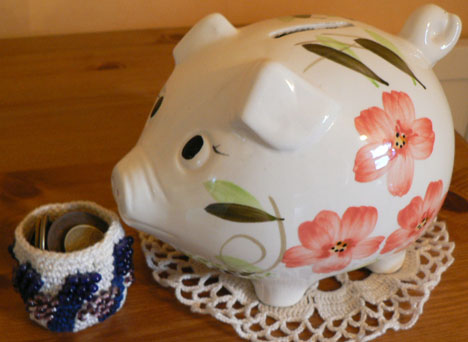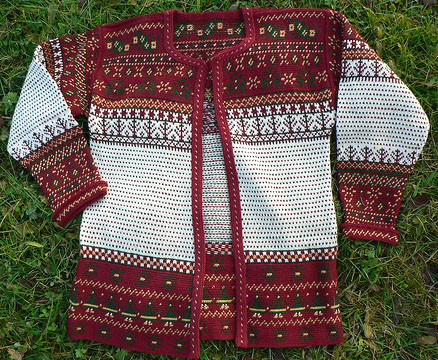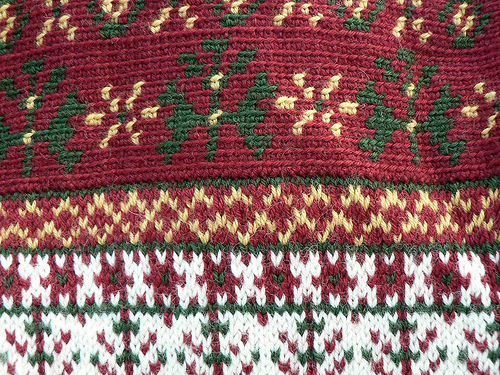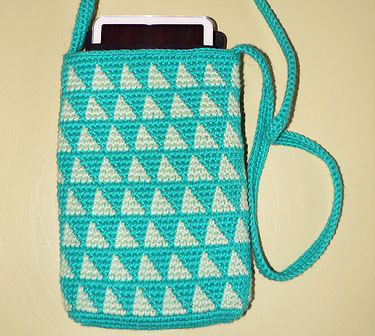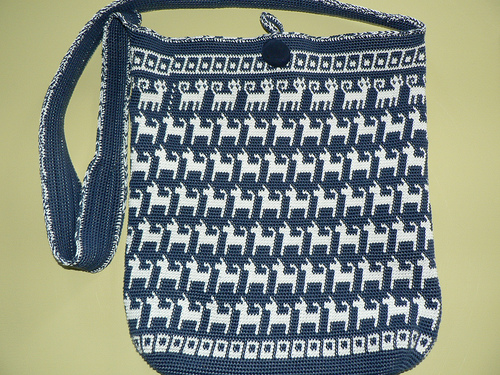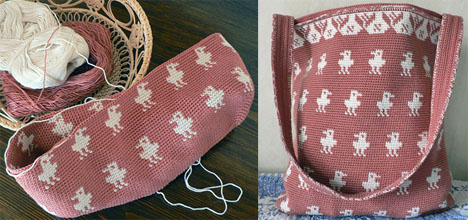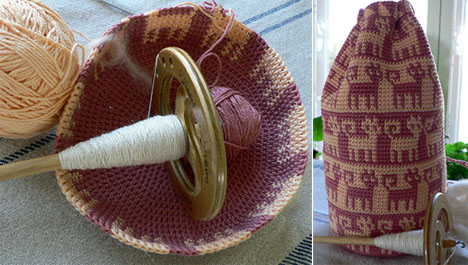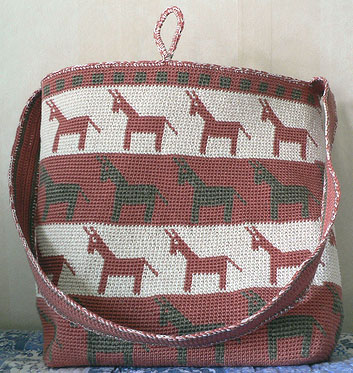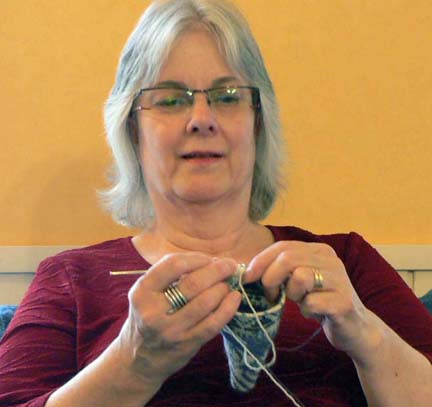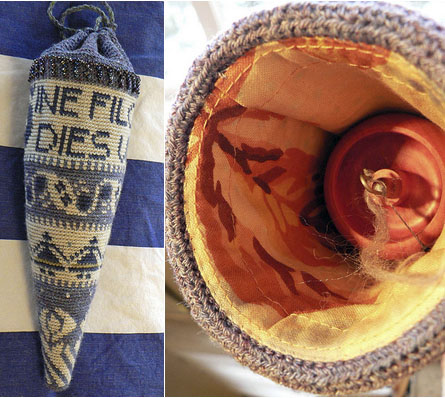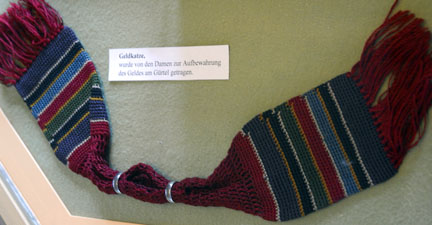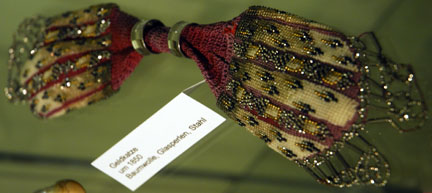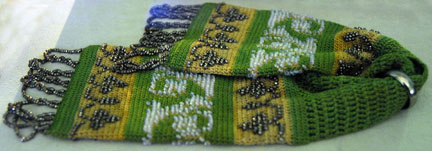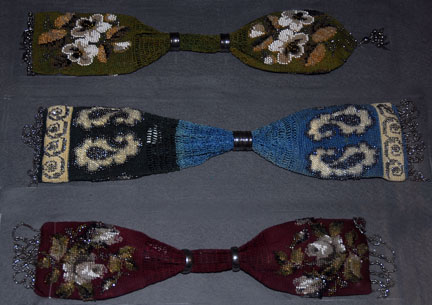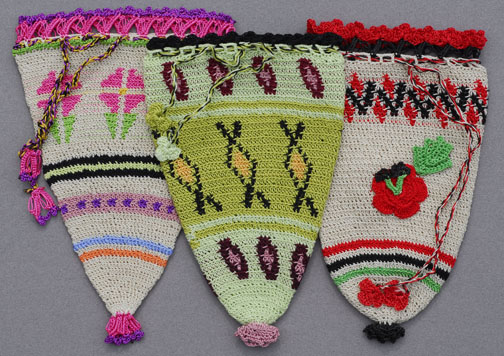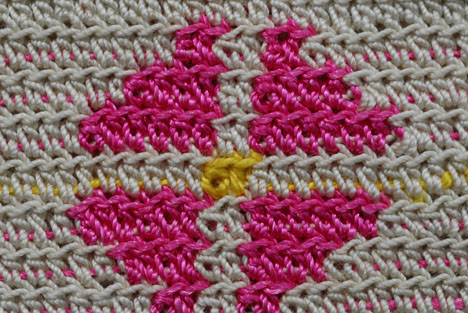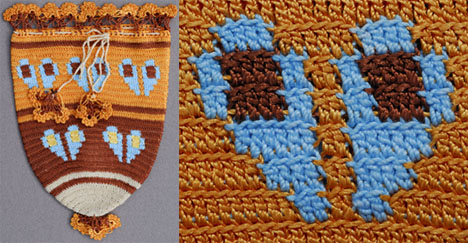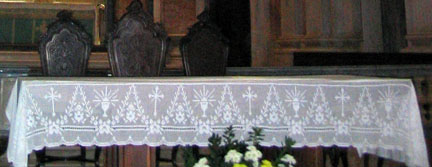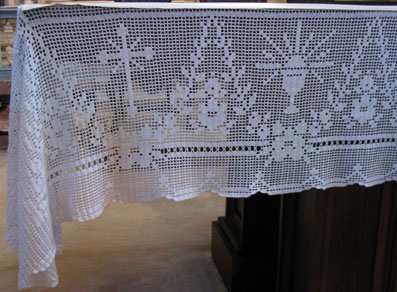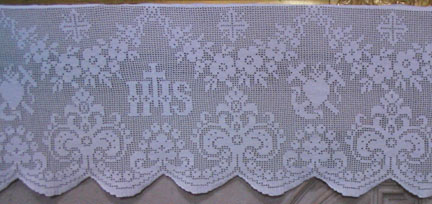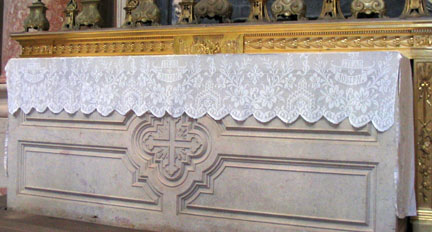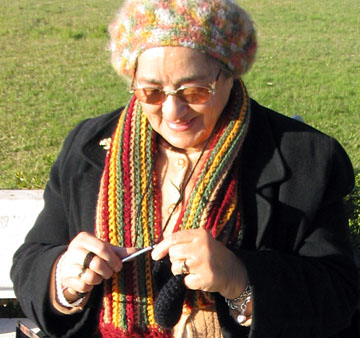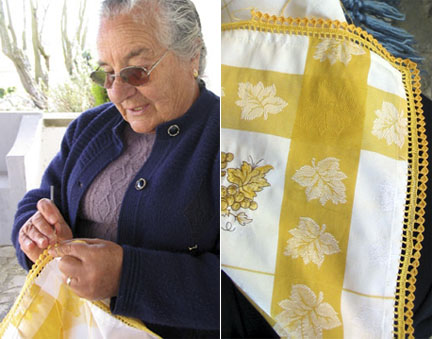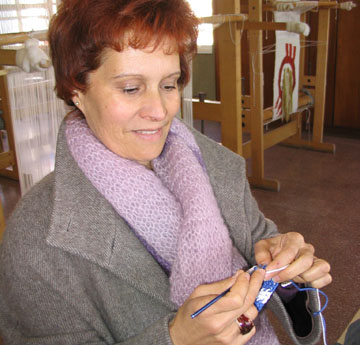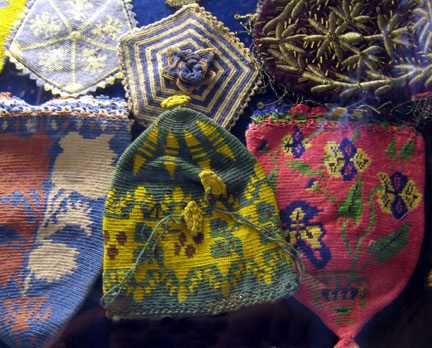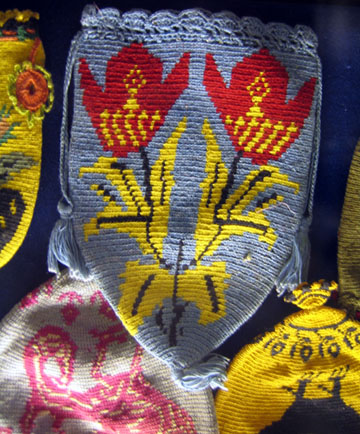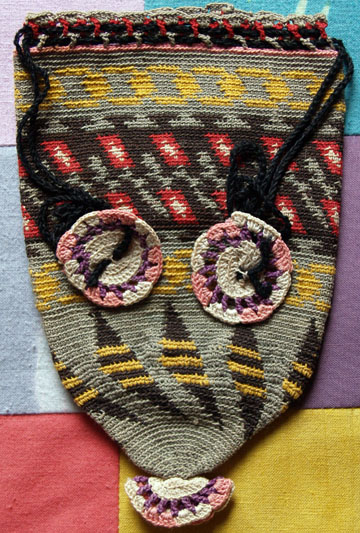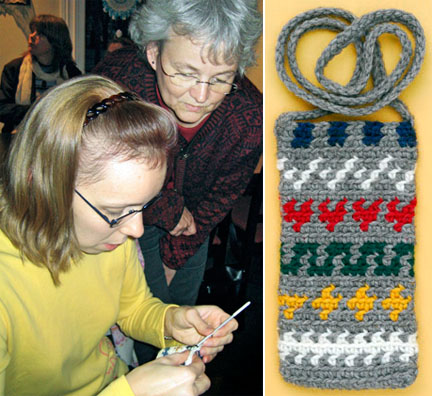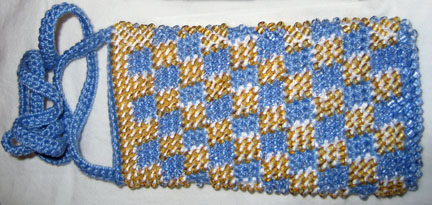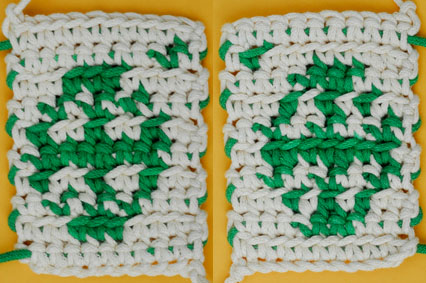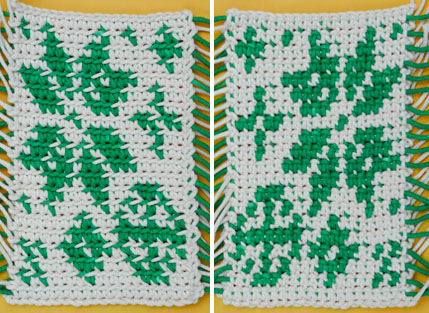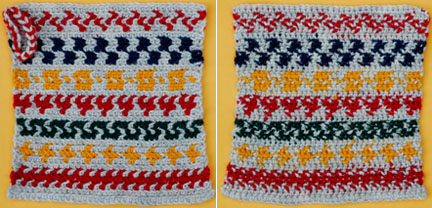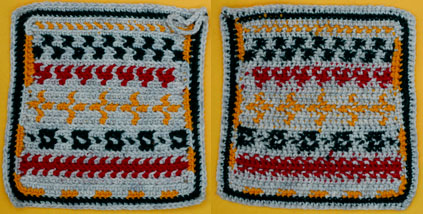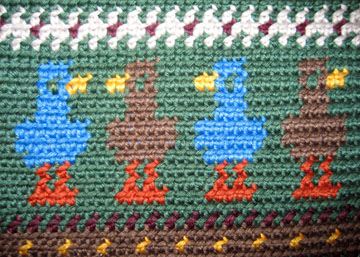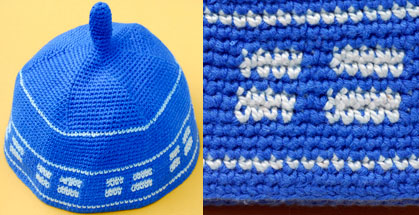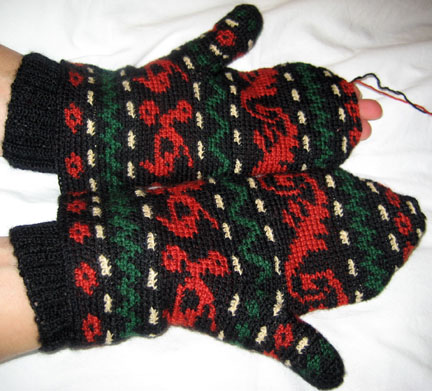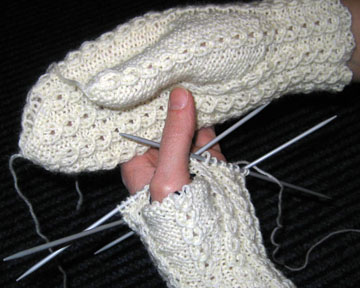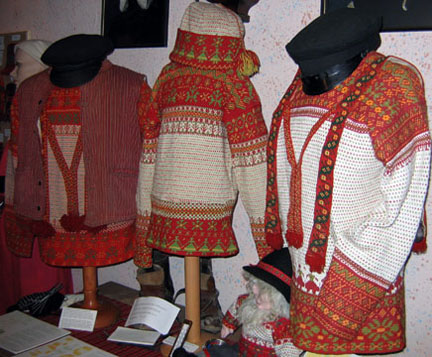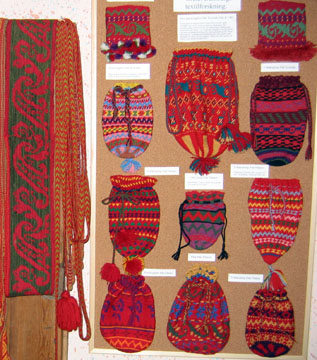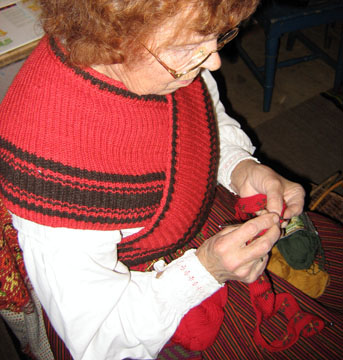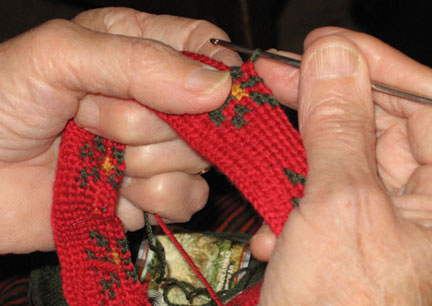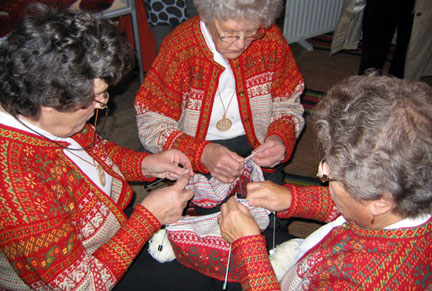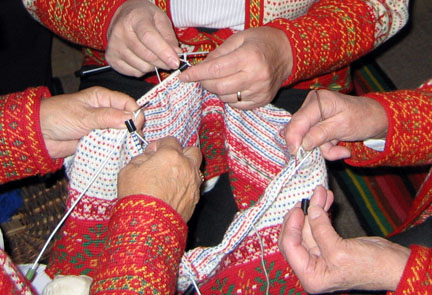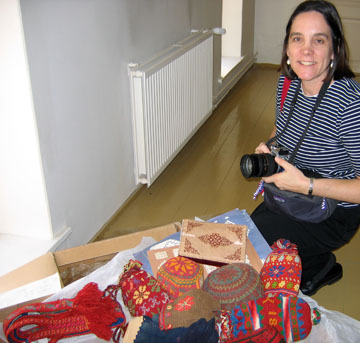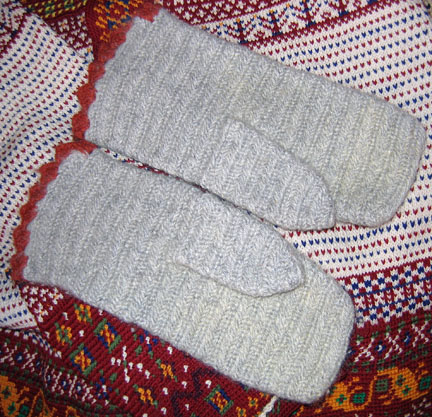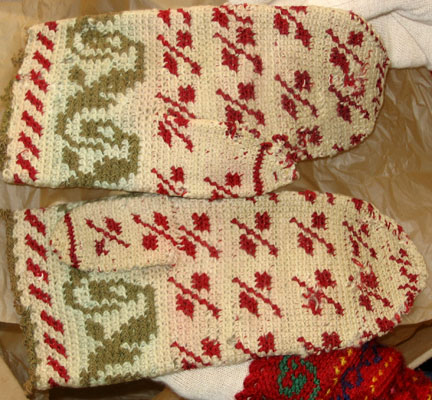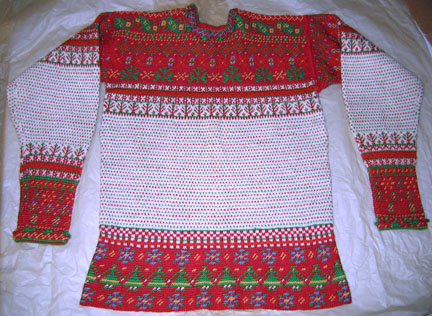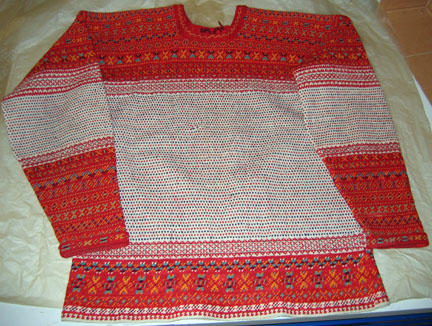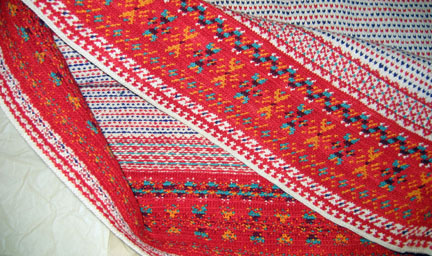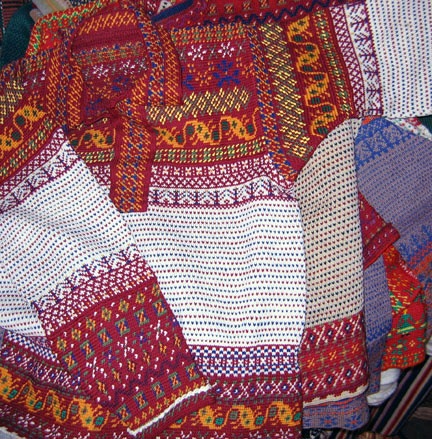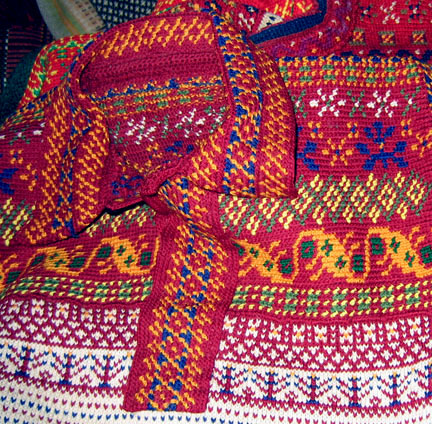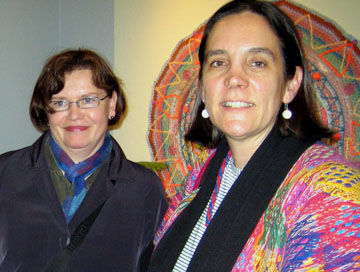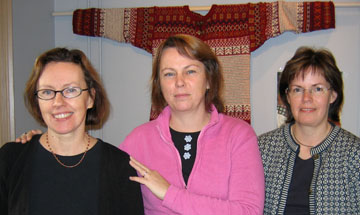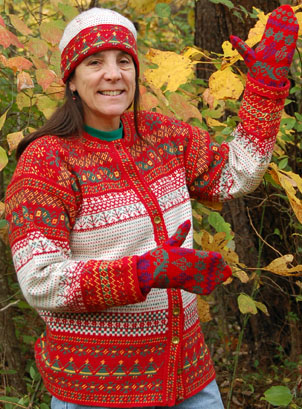Another tapestry crochet artist of note is laracroft (her web name, of course). Although originally from Canada, after 20 years of living in Spain, it should not be surprising that Danielle has chosen the European back loop tapestry crochet technique. She says it best (the following is from emails or was originally posted on
Danielle’s blog and in
Ravelry):
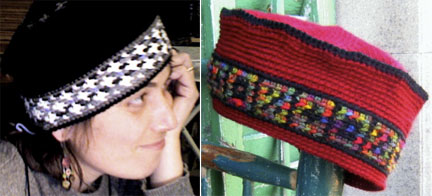
Danielle’s Hat and her Russian Princess Hat (designed by Annette Petavy, from the French crochet magazine, 1000 Mailles) with Danielle’s addition of a tapestry crochet border.
“I live and work as a classical musician in Barcelona, but really I’m from Toronto. I started seriously crocheting last October (2006) when I injured my back, but now that my back is fine I find myself with a serious yarn abuse problem. But the only thing I have in common with Lara Croft is our taste for Bach.”
“Mine is about Crochet Jacquard, or as the Americans call it, Tapestry Crochet. If you always work into the back loop, your designs will not lean over to the right, and the carried thread will not show through.”
“The cuff [below] is done in a new and utterly impossible technique which me and some girls from Ravelry have dubbed “Mensa Stitch” but which is also known as Backwards Crochet. In the small photo to the left you can see my new version of the cuff, now that I’m a bit more adventurous in Mensa Stitch. On the right is the button band, just waiting for some buttons.”
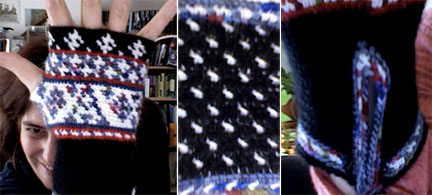
Danielle’s Cuff.
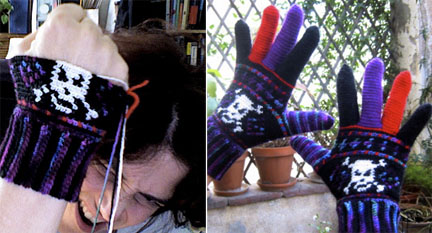
Danielle’s gloves were made for the Spanish glove swap, GUANTAZO, for a friend who likes skulls and purple!
“I came to Tapestry Crochet, not through tapestry crochet or even via crochet at all. I discovered it while surfing through Scandinavian knitting links. My biggest love in the fiber world is Nordic stranded colourwork, which turns on all my lights. One day I found a site called “Nordic Fiber Arts” and started scanning through their book list. When I came to a title called “Decorative Crocheting” my heart started racing. There on the cover was an exquisite, intricate stranded sweater, ostensibly crocheted! To me this was like Redemption from on high, because although I love the look of knitting, I find the act of it unspeakably tedious, while I simply love to crochet. Several seconds later I had ordered the book and started burrowing all over the Net to find more links and photos. By the time the book arrived at my door two weeks later, I had already figured out the technique by zooming in on the very few images then available, and was obsessively experimenting with it. Later I discovered your beautiful work, Carol, and was terribly disappointed to discover that I was not in fact the First Man on the Moon! Still later you posted your article on TC in Korsnäs and I went wild with delight over the photos, and wild with jealousy that you got to go there!!”
“Not much has changed since then: my first love is still Nordic colourwork. My second love is Medieval Art, and I suppose a little of that may be reflected in the designs that come to me. I have (obviously) a bit of a penchant for little cross motifs which are all over Scandinavian and Baltic knitting, and also figure highly in medieval decorative art.”
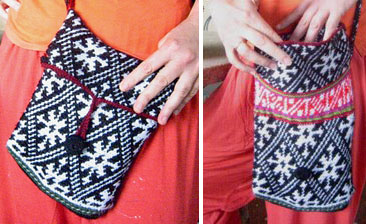
The motif on Danielle’s Latvian Mitten Handbag is from Latvian mitten designs.
“I consider myself very much a beginner still. I’d like to be able to say “Dale of Norway, move over!” but honestly a couple of hats, a few socks and a pair of gloves are not much competition for the masterpieces those northern folks have been making for the last couple of centuries.”
“And the best part is, after removing the icky circular needle which made the thing [below] look like a hula skirt, amazingly it turns out that it actually fits the DH [Dear Husband]!! However, the experience while character-building did not change the fact that I find knitting very, very tiresome. I’m glad it’s over, glad to be twirling again and finally done with all that Poking About with Pointy Sticks.”
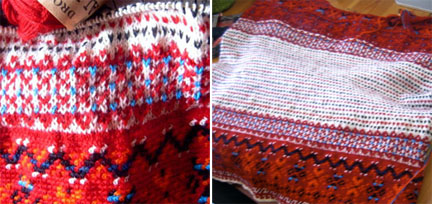
Danielle’s WIP [Work in Progress] Korsnas sweater.
“And that’s it, the whole knitted section [above], thank God. I have paid my dues, and I have proven to myself that I can knit. I can knit while watching CSI. I can knit with 2 strands, and even with 3 strands. Well, actually that last bit is not entirely true. 3 strands is not my strong point.”
“I hardly have time to crochet these days. I like doing 5 or 6 test runs before making anything pretty, but that’s a luxury I don’t seem to have these days. So my dear, I wish I could have made your birthday present a bit classier, but you’ll have to be satisfied with this thing [below].”
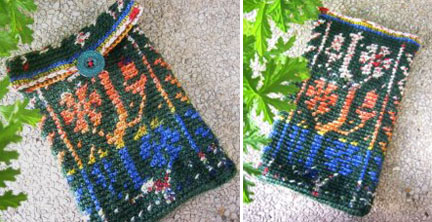
The design on Danielle’s Garden Pouch is from Plate LXV of La Vera Perfezione del Disegno per Punti e Ricami, 1561.
“This is certainly getting closer [below]. Only problem is, this was supposed to be a Troubador Sock, or rather a Trouvère sock, and somehow it got to looking like a Santa Claus sock. No matter, I can always hang it off the mantelpiece on Christmas Eve.”

First, a few test pieces, then voila!
“I can’t believe it. Tejemanejes, the Spanish online knit magazine, are going to PUBLISH (omgomg) these very Troubadour Socks [below] in their next issue! In celebration of which I have decided to give them their very own Name, since Troubadour Socks Number 1 is less than romantic. No, like roses each sock deserves its Name, and this sock is hereby named after that most excellent troubadour, Bernart de Ventadorn. (He probably would have worn them, too, airy-fairy poetic type that he was, if only he’d had a day job to help him with the purchase of luxuries like socks.)”

Danielle’s Bernart de Ventadorn Troubadour Socks.
“. . . a pair of my Troubador Socks should be in the next [Spring 2008] issue of Interweave Crochet, unless something terrible occurs like they decide they hate them or forget to put them in.”
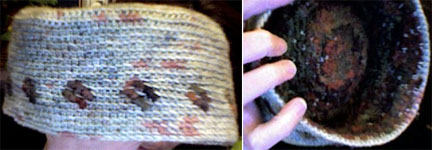
“Here’s a new technique I’m trying to get the hang of. It’s promising, but I fail to get the measurement right before felting. This is TC but leaving floats instead of carrying the second strand. Using a bulky 100% wool for the floats which after felting becomes a fuzzy, warm, thrum-like lining.”
“I’m a classical guitarist and I play, teach, conduct and crochet (and sometimes knit too) in Barcelona. Some days I have a hard time deciding which I like better, music or crochet. Guess I’ll have to keep doing both.”
I have not had the pleasure of hearing Danielle play, but if it’s anything like her unique approach to tapestry crochet, then it must be spectacular!
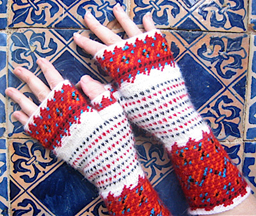
Update: Danielle’s free VAASA fingerless gloves pattern is included in the Spring 2008 issue of Black Purl Magazine!!!
